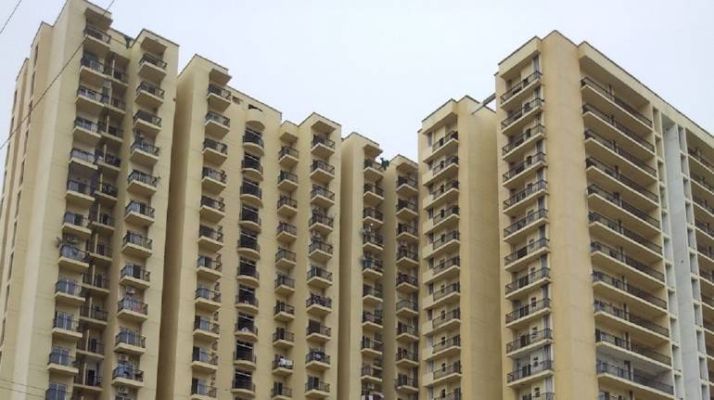The festive season is red-hot and running. Homebuyers are thronging online real estate portals and events to snap up properties at good bargains and end the year on an exciting and auspicious note, amidst the gloom conjured up by an invisible Frankenstein.
As if on cue, real estate developers have geared up accordingly & toiling day and night to harvest a good crop from the festive season with cash discounts, deferred payments, staggered payments, stamp duty waivers, free maintenance and other sops, all decked up for homebuyers.
The real estate sector is firing on all cylinders to liquidate existing inventory and in the same vein register healthy bookings for newly launched projects. With states reducing stamp duty on property transactions, financial institutions slashing home loan rates to below 7% and realtors doling out exciting payment plans and deals, property sales in most tier 1 cities have ballooned.
Affordable housing sales set off the fireworks
Housing units in the sub-Rs 45 lakh price bracket, also known as the affordable housing under income tax laws in India, called the shots during this initial festive period, registering almost 45% sales.
Real estate experts attribute the shift in homebuying consciousness among homebuyers about the sense of security that comes with owning a home, the ease of home buying with digitization and the adoption of remote working as solid reasons for the surge in affordable property sales.
The wave of digitization that engulfed the real estate sector played a vital role in aiding real estate developers to engage with buyers, showcase properties on the go and conduct online home transactions without a hotch. Newbie homebuyers sapped out after staying in small, rented accommodations, bought affordable ready-to-move homes and near-finished apartments to relieve themselves from the drudgery and bring a lifetime asset into their lives.
NRIs fuel luxury home sales
If affordable residential properties had a field day during the festive days, luxury homes weren’t far behind. NRIs looking to return to India on the backdrop of a bleak job scenario overseas have decided to take advantage of the rupee’s depreciation and lap up luxury homes at a lesser price. NRIs are scouring for bigger homes, with the WFH concept becoming a norm. 3BHK, 4BHK and 5BHK homes in the range of Rs 2-5 crores have sold like hotcakes in many tier 1 cities, especially in the south.
Looking at the sudden demand in luxury properties, real estate developers have recast their payment plans and furnished a slew of incentives to expedite buying decisions of NRIs.
According to JLL India, unsold inventory took a dip by 2% in the September quarter and the government’s decision to reduce stamp duty rates has finally paid off. Real estate sales in Mumbai went up by 35% year-on-year in October while Delhi-NCR accounted for 22% increase in property sales. Other tier 1 cities also registered healthy property sales figures.
Affordable and mid-segment categories show signs of revival
Branded real estate developers having a healthy portfolio of well-priced properties in the affordable and mid-segment categories have become a favourite for homebuyers. Homes priced between Rs 50 lakh to 1 crore have been the biggest contributors to sales, owing to low ticket sizes, developer incentives and drop-in interest rates.
Properties in the advanced stages and ready-to-move ones witnessed the highest recovery. 1.5/2BHK properties saw healthy sales followed by 2.5/3BHK properties. This is mainly due to increasing preferences for dedicated workstations. Demand for 1BHK homes came in hordes from first-time homebuyers who took the advantage of incentives on offer.
Is a real estate recovery imminent? Can the property sector touch pre-Covid levels?
The property sector witnessed green shoots of recovery during the third quarter after the government announced loan moratoriums, cut in interest rates, stimulus packages for ongoing RERA projects and reduction in stamp duty rates.
Real estate developers relieved at this development offered attractive payment plans such as 10:90 or 20:80 payment schemes to rein in homebuyers and liquidate their properties. Along with these schemes, low-interest rates, stamp duty waivers and property discounts sweetened the deal for homebuyers and translated into sales. It’s a buyer/end-user market now and with the festive season siding with the expectations of real estate developers, we will see property sale records tumble in the coming quarters.
So, we can say that it’s definitely a revival for the real estate sector, but the road to recovery is longer. The market has risen from the ashes in a Phoenix-like fashion and we will have to wait for the next two quarters at least to call it a recovery. Until then the real estate sector has to continue this momentum for the next six months.
However, whether the real estate sector will be able to touch pre-Covid levels depends on the financial and operational performance of real estate developers and how the Covid scenario plays out next year.
Developers with healthy balance sheets, good liquidity, financial flexibility and a well-diversified portfolio will be able to ride out the crisis better and make adequate plans to strengthen themselves for the future.





